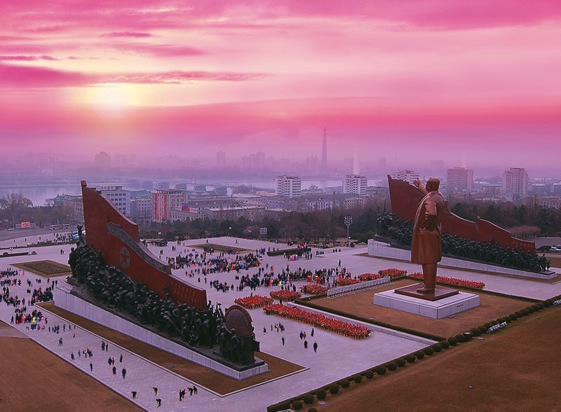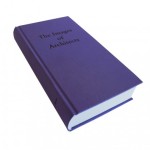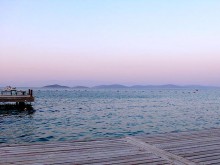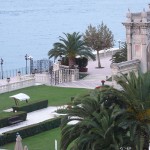One of the many revelations within Barbara’s Demick’s “Nothing to Envy” (2009), Demick’s award-winning riveting account of quotidian life in North Korea, concerned the 160-mile border between North and South Korea, a narrow demilitarized zone untouched by global changes of the past 64 years, which has reverted to a simulacrum of an ecological sanctuary with more than 2,900 plant species and 70 types of mammals.
Perhaps it’s somehow fitting that one of the world’s most biodiverse habitats exists along the southern border of North Korea, conceivably the world’s most isolated country. Without Internet and only government television, North Korea is as removed from global life as the moon is to earth.
For a majority of us on this planet, a trip to North Korea is unlikely to occur in this lifetime – and the best we can hope for is a guidebook as insightful as Philipp Meuser’s “Pyongyang, North Korea: Architectural and Cultural Guide, Volume 1 and Volume 2.”
A German architect and publisher, Meuser (who refers to his work as “the illicit guidebook”) was offered a large selection of architectural images of Pyongyang, the capital city of three million that arose from the rubble of the Korean War – but the Pyongyang Foreign Languages Publishing House stipulated that Meuser publish all photographs without critique.
In spite of its propagandistic overtones (the guide was published on the 100th anniversary of Kim II-sung’s birth), Volume 1 of this two-volume work is a fascinating glimpse at the urban landscape of a city that seems as remote as Shangri-La.
Photographs are divided into architectural categories, encompassing hotels and department stores, monuments, cultural venues, and residential buildings, with the images presented with only the briefest of captions. For the most part, buildings in North Korea are considered either functional or monumental – and the overall effect of gazing at such a narrow range of architectural style induces a reverie on the limitedness of North Korean life.
In Volume 2, Meurer (who visited North Korea three times while researching the book) acts as flaneur, offering firsthand, first person anecdotes about Pyongyang as he strolls about the city. “Well-kept residential buildings…conceal primitive, single-storey huts in their backyards,” writes Meurer. Photographs of beauty salons and subway cars complement various essays from architectural historians – but in nearly every photograph, the monumental buildings exist without the context of people or pedestrians.
One of Meurer’s motivations in writing his “illicit guidebook” was to show that “North Korea is real and that Pyongyang is real” while understanding that for most of us, his guidebook will be the equivalent of a Google street view. We can look and we can imagine, thanks to Meurer – but it’s unlikely that we’ll soon find ourselves in the picture.
DETAILS:
“Pyongyang, North Korea: Architectural and Cultural Guide, Volume 1 and Volume 2”
Author: Philipp Meuser (Ed.), with essays by Ahn Chang-mo and Christian Posthofen
368 pages, over 450 images
two volumes in slipcase
Product Dimensions: 9.9 x 5.5 x 1.6 inches DOM Publishers English
ISBN-10: 3869221879
ISBN-13: 978-3869221878
$49.95






